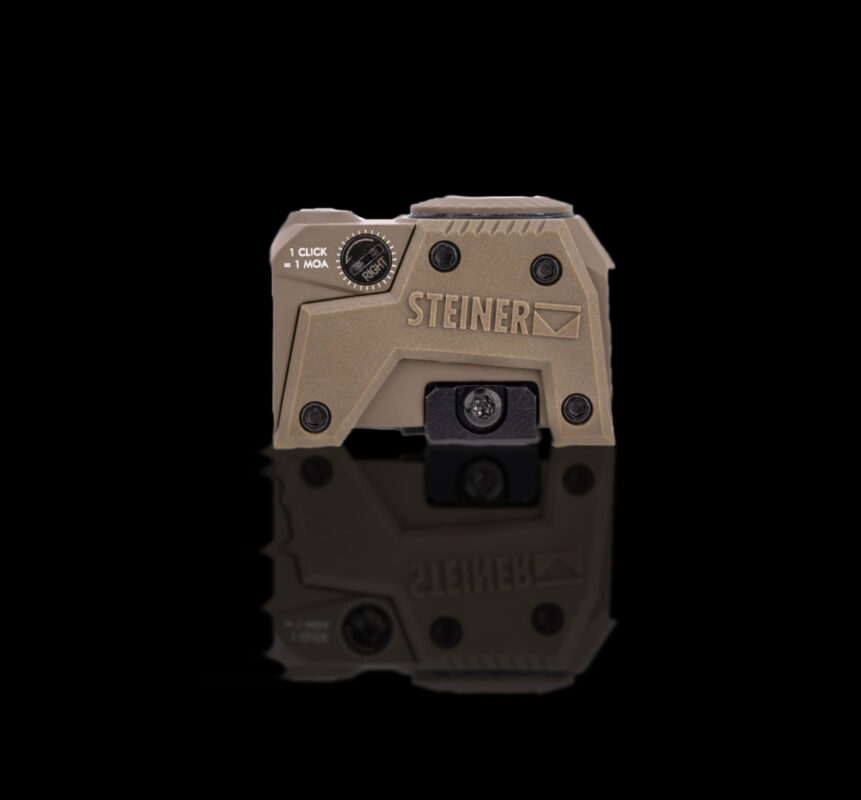New to Red Dots? Brush up on the basic features by clicking the drop down.
Red Dot Reflex Sight Primer
Intro to Red Dot Reflex Optic Features

Closed & Open Emitter Optics
Optics can be closed or open when it comes to the accessibility of the dot emitter. Closed emitter optics are sealed with glass on both sides of the optic enclosing the emitter from dust, debirs, liquids, atmospheric effects, lint and more. This sealing effect can dramatically improves the reliability and function of an optic in critical situations.

Auto On & Off Red Dot Sights
Traditional Red Dot Sights are known for impressive battery lifes. The standard battery life can range from 20,000-100,00 hours. Most optics today come standard with a auto on and off feature that help extend this life span well past the physical charge of the battery and leads inside of the optic. This feature is worth considering when purchasing an optic.

Multi Reticle System Reflex
Multi Reticle Systems are quickly becoming standardized in red dots, allowing users a greater selection of reticles for their varied use cases. Smaller MOA reticles can be harder to pick up but offer more versatility when shooting at distance, while larger dots and multi dot systems are easier to acquire in the lens but can limit accuracy at distance. Green and Red Dots often come down to user preferences but green reticles are typically easier to see yet often wash out on green backgrounds. Please contact us if you have any question relating to these features.

Solar & Fiber Optic Powered Red Dot
Solar & Fiber Optic features have become mainstream in many optics. Trijicon has pioneered the blended fiber optic powered sights while Holosun has pushed the boundaries of solar power. Dedicate Solar and Fiber Optics come with unique advantages and disadvantages. Fiber Optics can operate indefinitely yet are useless at night. Solar Power might be a useful fall back and in recent cases a battery free option when the optic is completely powered by a internal charging capacitor like the Holosun SCS and SCRS variants.

Polymer, Aluminum & Titanium Chassis Red Dots
A critical part of your optic is the chassis material used to house all the components. Optics can be cast, forged and injected from reinforced polymer to aluminum and even titanium. These materials all have their own unique attributes to consider. Polymer body optics are typically cost efficient and light weight but lack long term reliability. Aluminum is the preferred material but the quality of the alloy and methodology of manufacturing varies. Holosun has has introduced the Titanium chassis in a variety of optic lines taking survivability and damage resistance to the next level. Many Optics have unique designs or employ a sacrificial surface to negate damage to the critical components of glass and turrets. Companies like Trijicon have even patented the arched design of the RMR series to maintain a engineering lead in this evolving market.

Reflex Sight Footprints, RMR, RMSc, ACRO, DPP/R1Pro, Doctor/Noblex
There is a Huge variety of Optic mounting footprints and each one has it's own sub variants. Micro Optics belong to 5 Primary mounting configurations.
RMR - the most popular double stack option offering a universal fit for plate adapters.
ACRO - common among enclosed optics like the ACRO, Steiner MPS, RFX 45 & more.
RMSc - Ideal for sing stack slim line pistols like the G43, P365, Hellcat etc not to be mistaken for the Holosun K footprint despite the overlap.
Doctor/Noblex - least popular optic cut configured for double stack handguns
Aimpoint Micro - Popular for Mini Tube Red Dots like the Aimpoint Micro, Holosun 515/530 Sig Romeo 4 series and much more.






